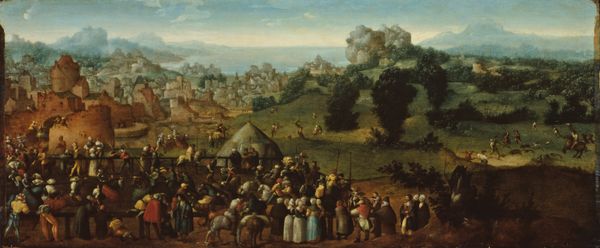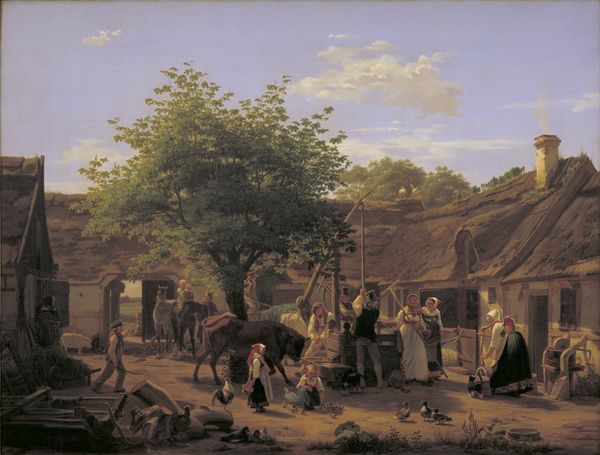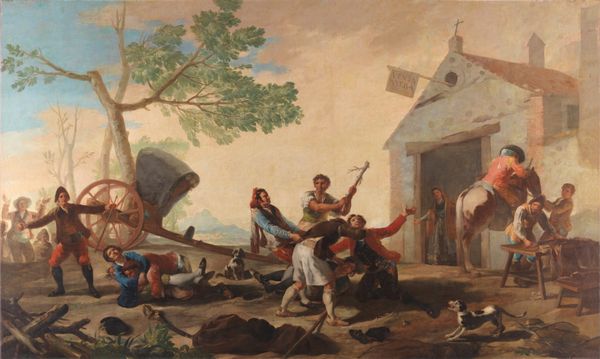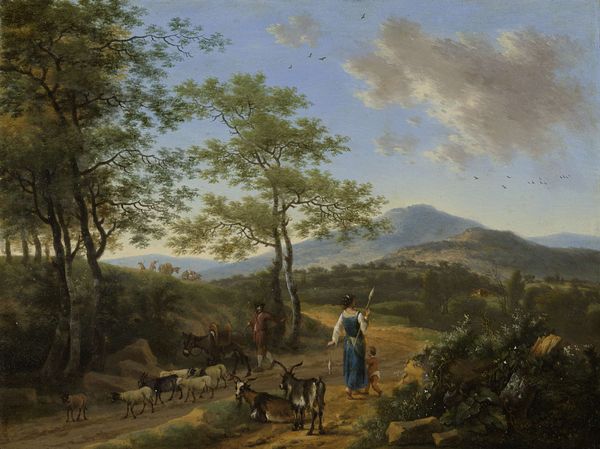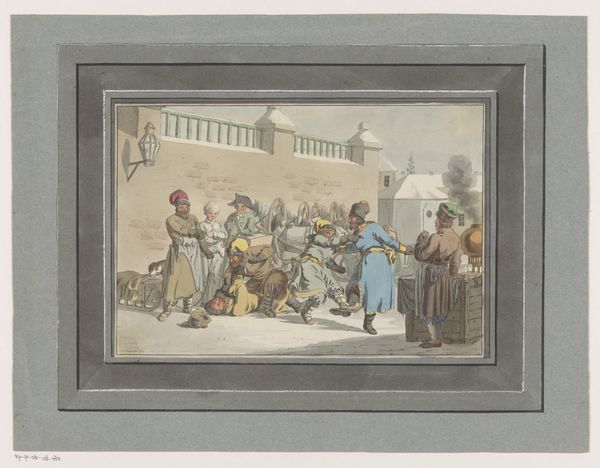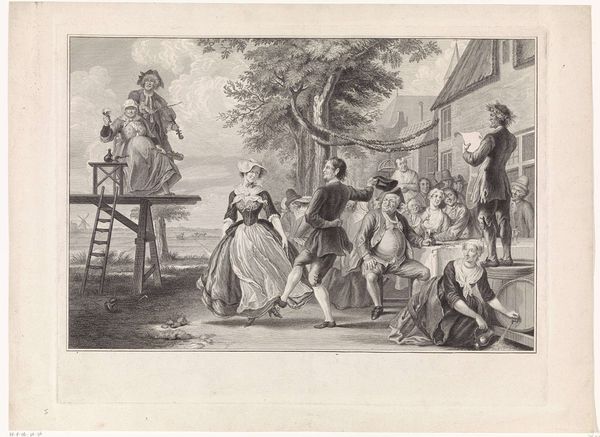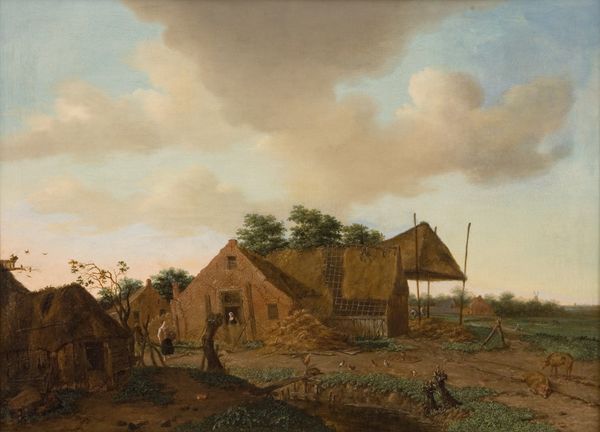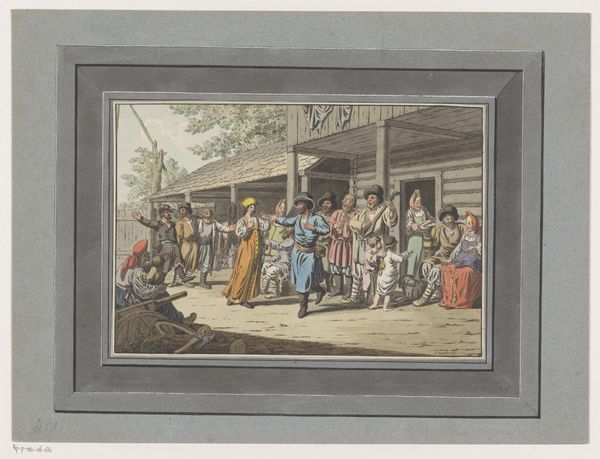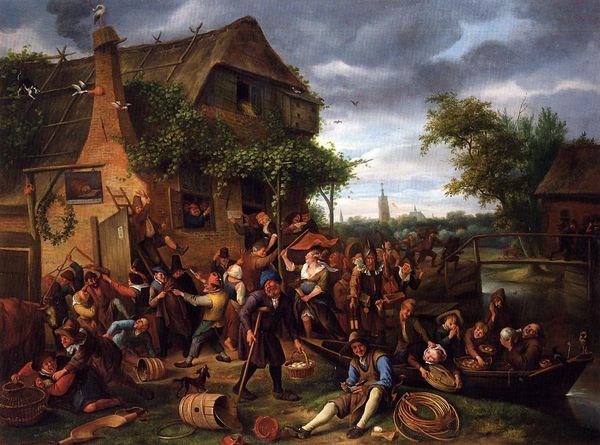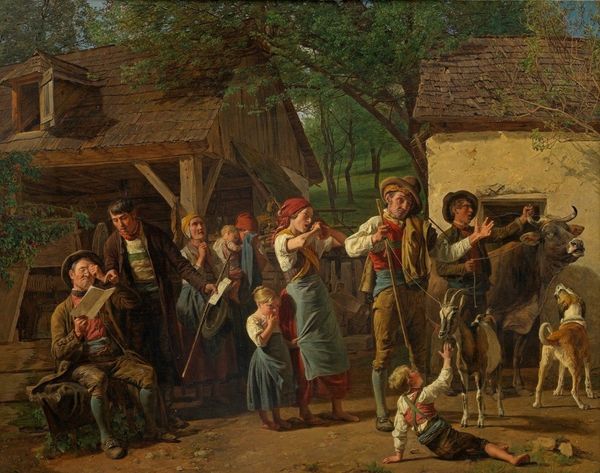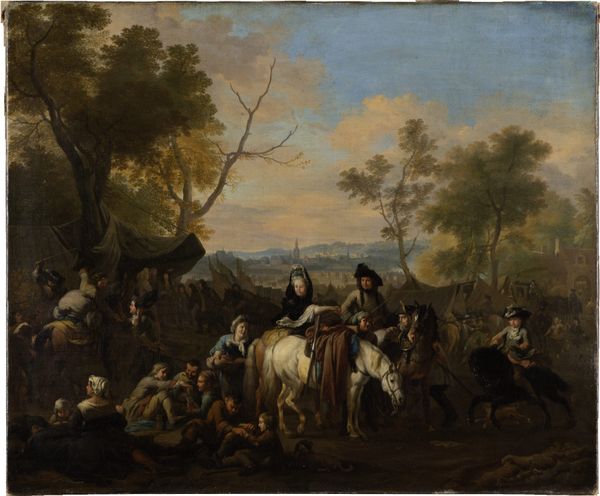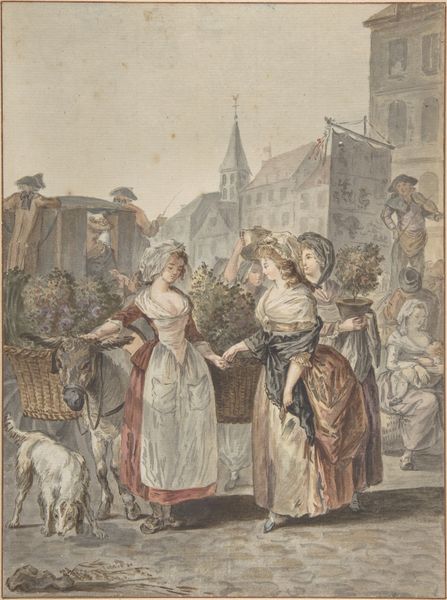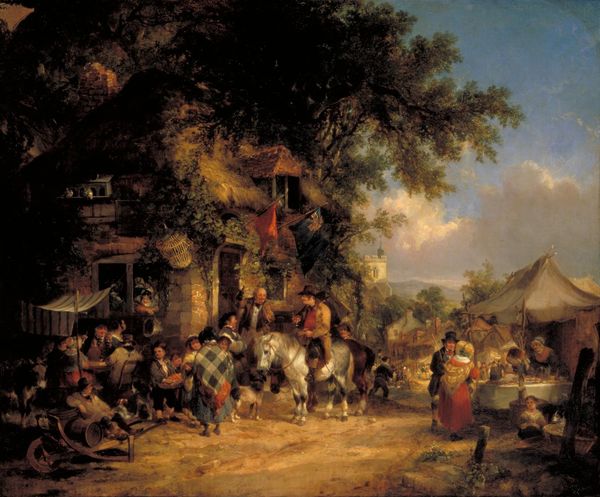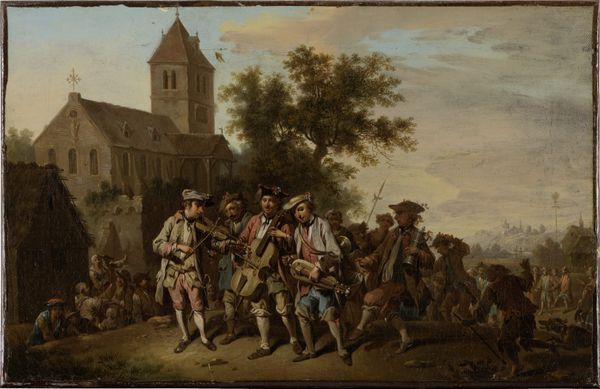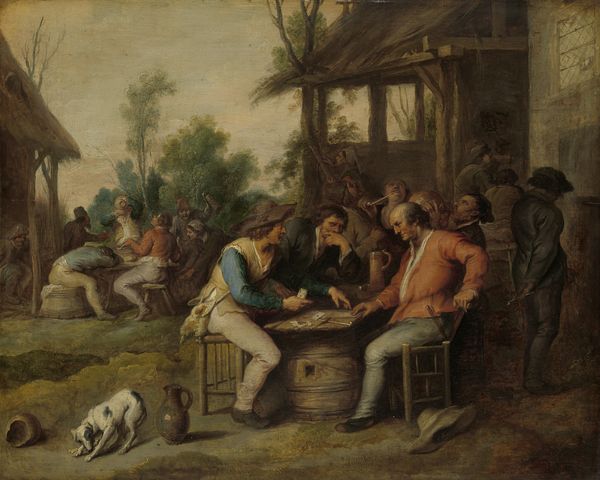
Dimensions: unconfirmed: 508 x 660 mm
Copyright: CC-BY-NC-ND 4.0 DEED, Photo: Tate
Curator: Agostino Brunias painted "Dancing Scene in the West Indies," showing what appears to be a lively gathering. Editor: My first impression is one of complex layers—the joy of the dance juxtaposed with the backdrop of colonial architecture and power dynamics. Curator: Indeed. Brunias, active in the West Indies, often depicted these scenes of cultural exchange. The dance itself carries deep symbolic weight, representing resistance and the preservation of cultural identity. Editor: Yet, we must question Brunias’s perspective. As a European artist, his gaze inevitably shapes the narrative, potentially exoticizing or romanticizing a reality rooted in oppression. Curator: Absolutely. And the clothing, the gestures, even the landscape—each element hints at a complex interplay of cultures, power, and resilience. Editor: By examining the image’s historical context, and acknowledging the artist's bias, we can unravel its nuances and engage with its unsettling legacy. Curator: I find myself contemplating the dual existence embodied here. The vibrant dance is both a joyful expression and a testament to a culture enduring in the face of adversity. Editor: Ultimately, this artwork serves as a reminder of the complexities of history, urging us to confront uncomfortable truths and embrace a more nuanced understanding of the past.
Comments
tatebritain 6 months ago
⋮
http://www.tate.org.uk/art/artworks/brunias-dancing-scene-in-the-west-indies-t13869
Join the conversation
Join millions of artists and users on Artera today and experience the ultimate creative platform.
tatebritain 6 months ago
⋮
This idealised scene shows mainly women of African and African European descent, both free and enslaved, dancing gracefully together. Agostino Brunias mainly painted such appealing images of plantation life for plantation owners and colonial administrators. Any reference to the forced labour and violence underpinning this is erased, as are his patrons’ roles in this oppression. Yet reading this picture against the grain reveals aspects of Black Caribbean culture. Details like the women’s clothing and African drum suggest this community’s agency, struggle for personhood, and resistance to slavery. Gallery label, April 2023
